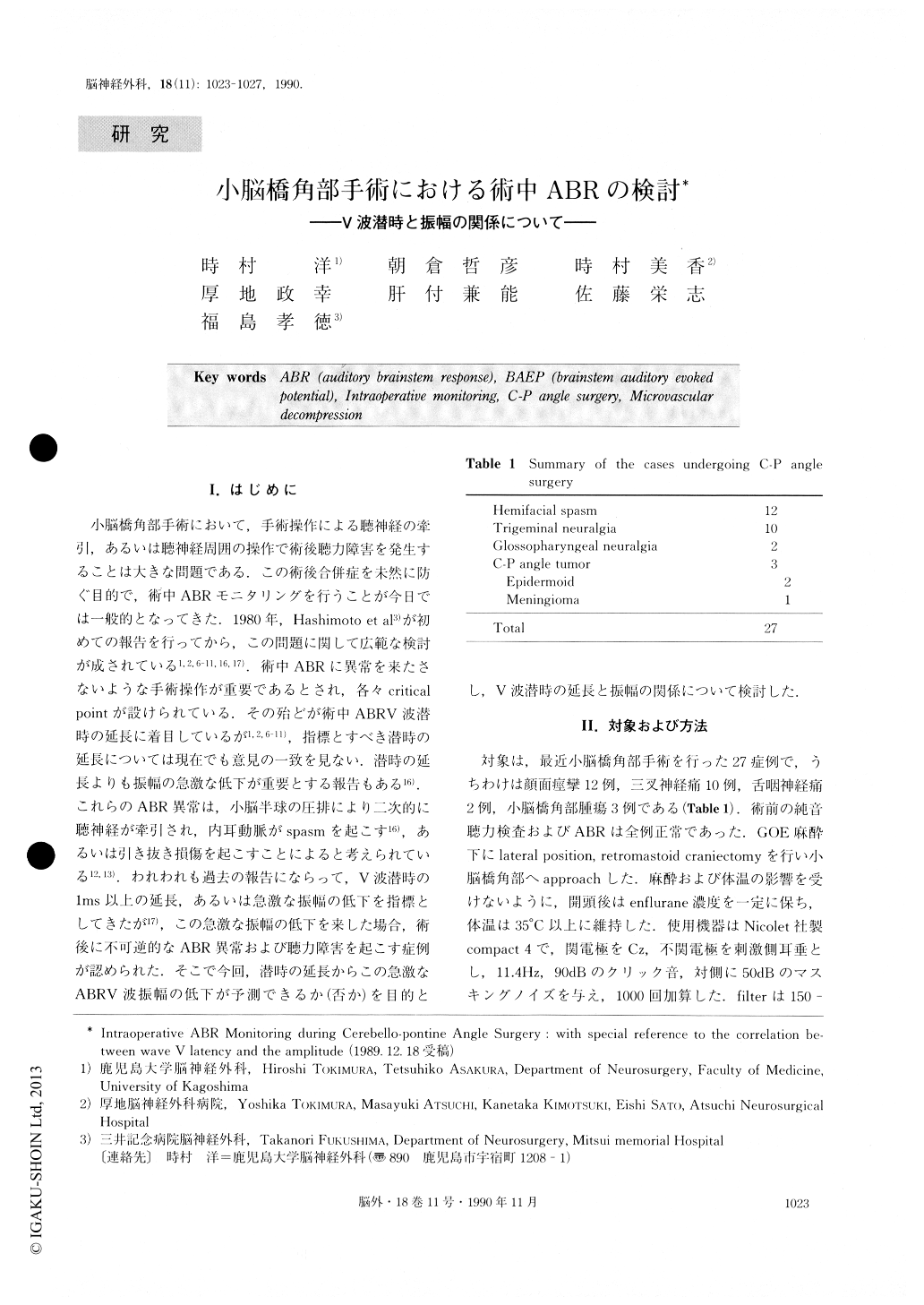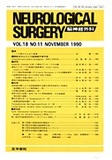Japanese
English
- 有料閲覧
- Abstract 文献概要
- 1ページ目 Look Inside
I.はじめに
小脳橋角部手術において,手術操作による聴神経の牽引,あるいは聴神経周囲の操作で術後聴力障害を発生することは大きな問題である.この術後合併症を未然に防ぐ目的で,術中ABRモニタリングを行うことが今日では一般的となってきた.1980年,Hashimoto et al3)が初めての報告を行ってから,この問題に関して広範な検討が成されている1,2,6-11,16,17).術中ABRに異常を来たさないような手術操作が重要であるとされ,各々criticalpointが設けられている.その殆どが術中ABRV波潜時の延長に着目しているが1,2,6-11),指標とすべき潜時の延長については現在でも意見の一致を見ない可潜時の延長よりも振幅の急激な低下が重要とする報告もある16).これらのABR異常は,小脳半球の圧排により二次的に聴神経が牽引され,内耳動脈がspasmを起こす16),あるいは引き抜き損傷を起こすことによると考えられている12,13).
Intraoperative auditory brainstem response (ABR) monitoring was performed in 27 patients undergoing C-P angle surgery (12: hemifacial spasm, 10: trigeminal neuralgia, 2: glossopharyngeal neuralgia, 3: C-P angle tumor, 2 epidermoid, 1 meningioma). Because of the in-troduction of this method, no patient suffered from post-operative hearing disturbance in this series.
During C-P angle surgery, the wave V of ABR changes according to the retraction of the cerebellum and the manipulation of the eighth cranial nerve. Many authors have discussed this change, however the timing and the mechanism of disappearance of wave V is un-clear. Accordingly, the authors discussed the correla-tion between the prolongation of wave V latency and its amplitude.
The wave V amplitude was measured from the posi-tive peak of wave V to the next negative peak. Then, the correlation between the prolongation of wave V latency and its reduction ratio (%) of amplitude was represented as a parabola. The wave V reduces its am-plitude when the prolongation of the latency is from 1.5ms to 2.0ms. Once the prolongation of the latency is over 1.5ms, the amplitude of wave V seems to be re-duced suddenly, because it takes over 1'30" to finish each record. But the authors demonstrated the gradual reduction of the amplitude of wave V in Figure 3. As mentioned above, the prolongation of wave V latency must be less than 1.5ms, and the neurosurgeon must recognize this turning point during C-P angle surgery.

Copyright © 1990, Igaku-Shoin Ltd. All rights reserved.


